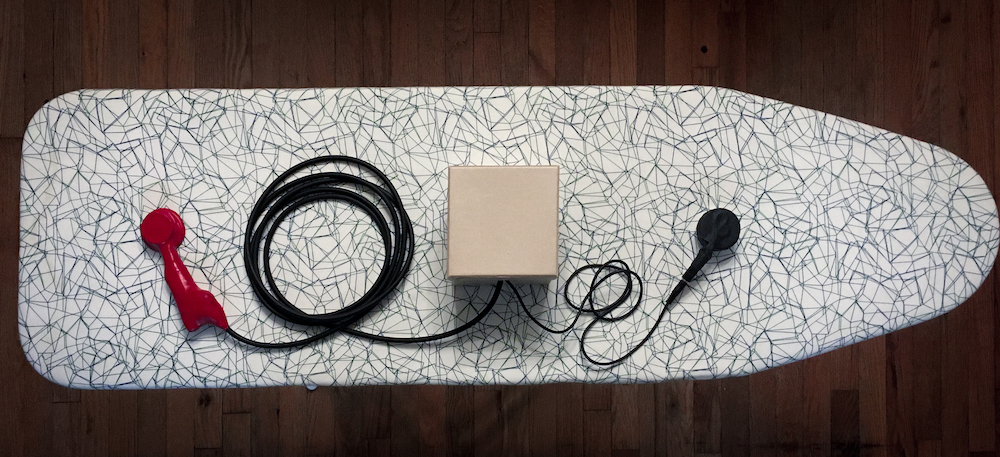Embodied Transductions through Musical Practice
Embodied Transductions explores alternative ways of knowing bodies—both human and non-human—through hacking biomedical technology for musical expression.
Embodied Transductions explores alternative, feminist ways of knowing bodies—both human and non-human—through hacking biomedical technology for musical expression. Who or what has the authority to know, to speak the truth about health and life? A hacked medical-grade stethoscope listens to heart sounds, breathing, vocals, and the vibrations of an ironing board and cedar hope chest, with an amplifier and transducer to create feedback. Contrasting the feminized labor of ironing and the hope chest’s traditional role in young women's preparations for marriage, Embodied Transductions repurposes a medical stethoscope to amplify latent resistances and resonances of these materials and the composer/performer's woman body.
Technologically, the instrument consists of a modified stethoscope whose signal routes to a microphone, then to an amplifier, then to a transducer. This vibrates an ironing board, a cedar hope chest, and the performer’s body. The stethoscope listens to heart sounds, breathing, vocals, and the vibrations of the ironing board and cedar chest to create feedback. The simple setup embraces DIY and amateur hack aesthetics that often resist authority.
Philosophically, Embodied Transductions critiques Foucauldian medical authority and explores feminist approaches to embodied knowledges. Who or what has the authority to speak truth about health and life? Contrasting the feminized labor of ironing and the hope chest’s traditional role in young women's preparations for marriage, Embodied Transductions repurposes a medical stethoscope to amplify latent resistances and resonances of these materials and a woman's body. The performance demands knowing through embodied experience, and sharing agency with the unpredictability of feedback through physical materials.
This work advances my broader agenda exploring alternative epistemologies with biodata—data about human bodies, behavior, thoughts, and feelings, such as heart rate, step count, etc—and the role of this data in everyday meaning-making and and living ‘well’. Biodata is often analyzed to yield insights for 'health' and 'productivity'. Yet, this approach risks reducing the complexity of lived experiences to numbers and, through the perceived authority of data, can delegitimize other ways of knowing. Measurements always leave something out, and measurements not only describe but also co-construct reality. To help explore alternatives, Barad’s concept of intra-action emphasizes the entanglement of self and environment—each measurement makes an agential cut between sensor and what is sensed . Simondon’s transduction emphasizes dynamic transformations of energy from one form to another, leading to individuation of bodies—how we become ourselves . Embodied Transductions repurposes a traditionally medical biosensor to explore a way of knowing the body and mundane domestic objects through the phenomena of their intra-actions, transductions, and becomings.

The stethoscope handle, box for electronics enclosure, and transducer laid out on the ironing board.
Papers
2020 - ongoing